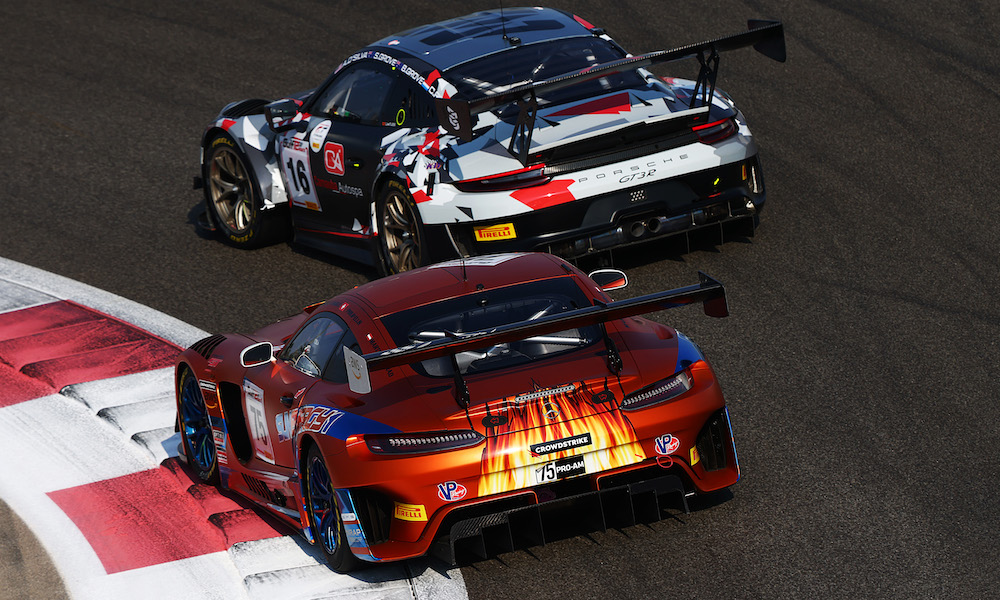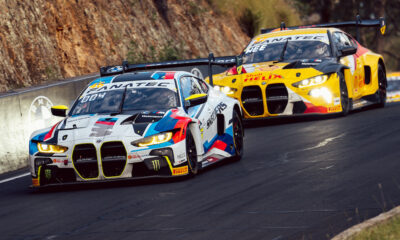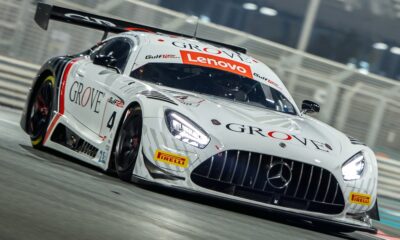Teams that have contested past editions of the Gulf 12 Hours have expressed support for the event’s move to a continuous race format, which is a condition of it becoming an Intercontinental GT Challenge powered by Pirelli round.
The Driving Force Events-run contest was added to the IGTC schedule this year and will return to the SRO Motorsports Group championship’s calendar in 2023.
A key change to the event under its IGTC guise is the scrapping of the traditional format whereby the race was broken up into two six-hour segments truncated by a break.
The team manager of four-time Gulf winner Kessel Racing voiced support for the move to a continuous 12-hour race whilst acknowledging that the double-six format is the preference of many amateur drivers.
“We have been to this race since the first edition,” Tiziana Borghi told Sportscar365. “We like this event very much because it’s at the end of the season in a wonderful place.
“Before, the two [sets of] six hours were maybe more easy for drivers because they had time to rest and we had time to prepare the car. But a real 12-hour is good.
“For us, at the end, it’s the same approach. The start is the most dangerous moment [of a race]. To have two starts could be difficult. Both the rules are good for us.”
When asked if Kessel would support a full-time switch to the continuous format, Borghi said: “Yes, absolutely. We have been very good supporters of the event.”
SPS Automotive Performance team principal Stephan Sohn highlighted that an uninterrupted race could bring more strategy options.
“I’m more into the 12 hours in one shot,” he told Sportscar365. “I feel that our strength as a team is the strategy, and if you have it all in one shot it gives more options for the strategy.
“Doing it in two parts is sometimes more convenient for the Am drivers. They feel more comfortable to have a break and then go for the second part.
“So I think, whatever you do, you have 50 percent liking it and 50 percent going the other way. Personally, I like it one shot.”
Arkin Aka, whose Attempto Racing team won the Gulf 12 Hours in 2019, is also in favor of racing without the halfway break.
Turning the event into an IGTC round has introduced all-factory lineups for the first time.
“In my opinion, it makes sense,” Aka told Sportscar365. “This championship has changed from an amateur [driver] championship to a really professional one.
“In this case, it makes sense not to stop the race and let it run for the full 12 hours. We will see 15 or 20 cars that will have a sprint race for 12 hours. So I think it’s a good one.”
The view was also positive from Nick Cristofaro, whose 2 Seas Motorsports team won the last two Gulf 12 Hours.
“I think the Intercontinental is more competitive, which is a good thing,” he said.
“To have a full grid of GT3 is awesome. It’s growing in the Gulf region, and being a Bahraini team it’s good to see.
“Not having the gap in the middle is good. But we were quite lucky with that the last two years. With the McLaren we needed it to fix some things, and in the second year, we had brake issues that we managed to solve in the gap.
“Generally, it’s better to go straight through as an endurance race. What’s happened is a positive, on the SRO side and [Driving Force Events]. It’s a good combination.”
Promoter Says Move is “Right Choice” Under IGTC
Driving Force Events director Andrea Ficarelli told Sportscar365 that doing away with the double-six format is the “right choice” as the Gulf 12 Hours gains higher attention from GT3 manufacturers as an IGTC fixture.
He explained that the double-six rule was introduced for the inaugural 2012 edition partly because some of the cars couldn’t do the full 12 hours on one set of brakes.
“And we didn’t have a big number of cars, so it was useful to recover the cars if someone has a problem,” Ficarelli noted.
“After the first edition, we noticed that teams overall liked the format.
He added: “There were some criticisms, for example when drivers were not in a position to gain a lap, there was no reason for them to push because all the gaps would have been equalized anyway.
“Some teams told me that, in this situation, the first six hours is waiting until the race starts.
“It was a good opportunity to attract people in between. Having people here on the starting grid early in the morning is difficult: having people there in the afternoon is a different story.
“I agree that in the context of more professional races, the 12 hours in one go is the right choice.”


























